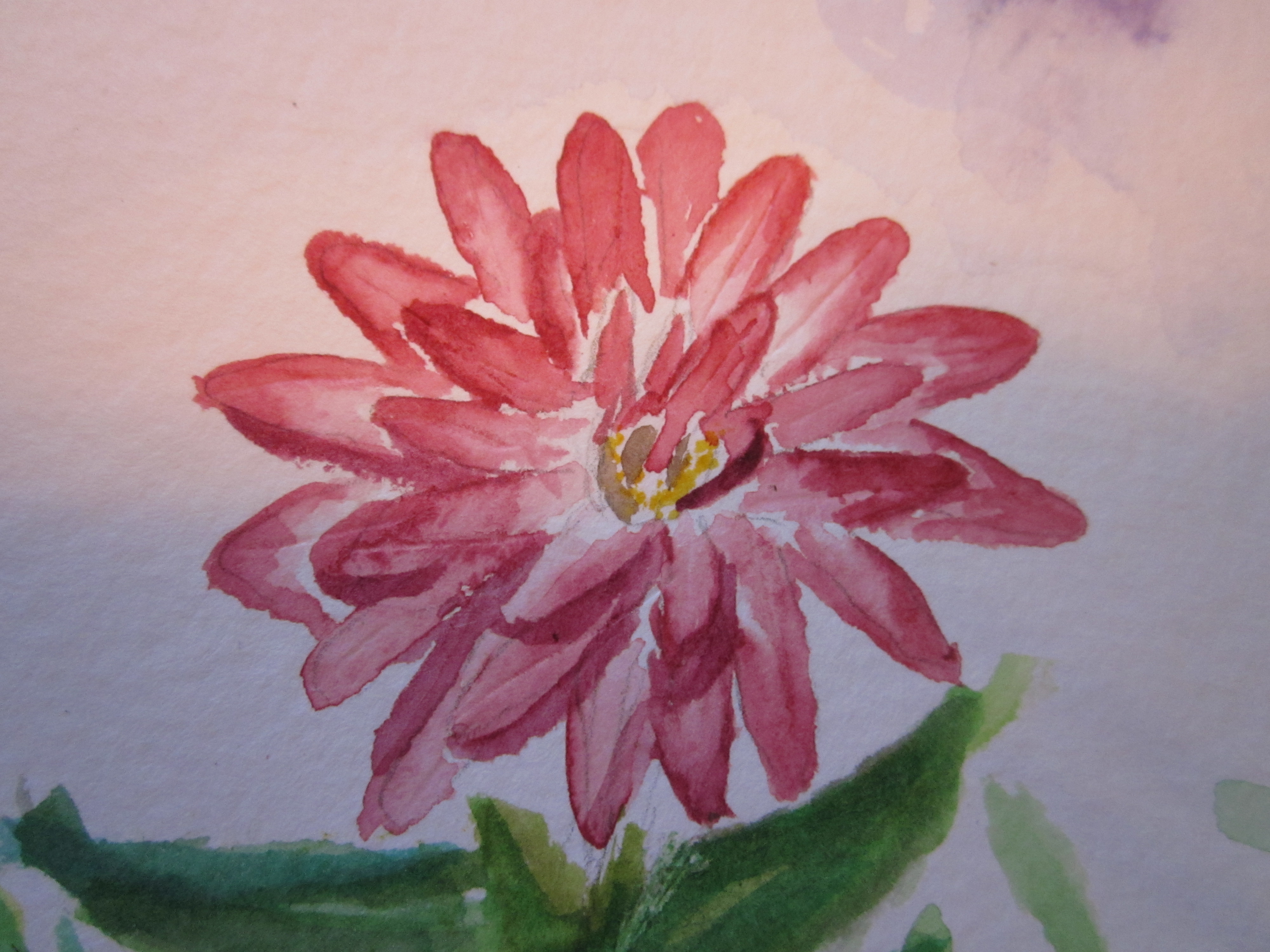The time has come. I am finally going to write about my art class.
First of all, I need to provide some history. There are two important facts you need to know. Firstly, in high school I really enjoyed art. I took 4 years of it, and it was one of my favorite classes. I even got in trouble by the principal once for trying to skip a school assembly to hang out in the art room. My two favorite things to make were pottery and pencil drawings. I loved drawing people and houses. I melded these two loves in this picture:
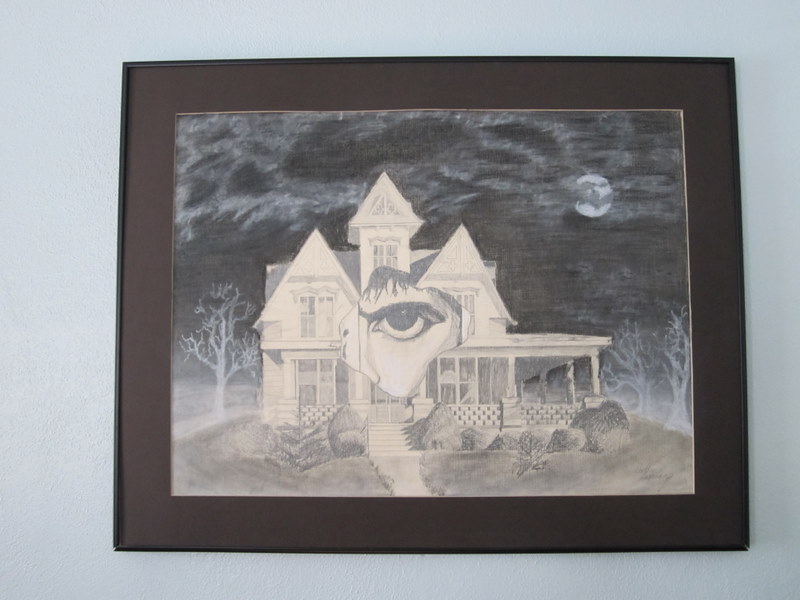
This house can be found in Monticello, by Riverside park. I got the idea of the eye looking through the house from my Psych textbook which contained a photograph of a sidewalk with a puddle on it that reflected the sky and trees. I liked the idea of a picture within a picture. I cannot draw solely from my mind’s eye, so I scoured magazines and found a picture of a convict glaring through jail bars. His eyes had the menace I was looking for, so there it is. As you can see, I struggled with the background. At my teacher’s instruction, I added the full moon to make the background more interesting. Of course, if the moon was really behind the house, the shadows of the house would be all wrong, but whatever. I still liked the drawing. My uncle actually tried to buy it off me, so it must be cool to other people besides me. By the way, the poor background here was a portend of things to come…
The second thing you need to know is that while I loved art in high school, I have produced maybe 2 pieces of artwork in the past 14 years. This is the case for a few reasons. I’m essentially a lazy person, and it’s easier to read or watch TV or check my email than to pull out all of my art supplies and try to uncover a patch of house in which to be creative. Also, I was a non-traditional student, so on and off for the past 14 years (since high school), I have been working full-time whilst also getting my AA, BA, and then MBA. I finally finished school last summer. I enjoyed my free time for a few months, and then I saw that the Figge was offering this Architectural Rendering in Watercolor class, taught by Tom Hempel, a local artist whose work I have always admired. If you’ve gone to any art shows in the QC, you’ve seen his striking, colorful paintings of houses and local landmarks. My time to jump back into artistic waters had arrived.
Tom taught his 4 step process to produce an architectural painting in watercolor. To begin, we drew very quick (15 to 20 minute) sketches of our houses, then used a T-square to straighten out the horizontal and vertical lines. Then we filled in the basic color of the house. After the first 2 hour class, this was my masterpiece. Oh wait, first of all, I have to show you the photo I was drawing from. Please keep in mind that the tree background on the printed photo is much darker than it appears here:

Okay, now that you’ve seen that, here is my starting point:
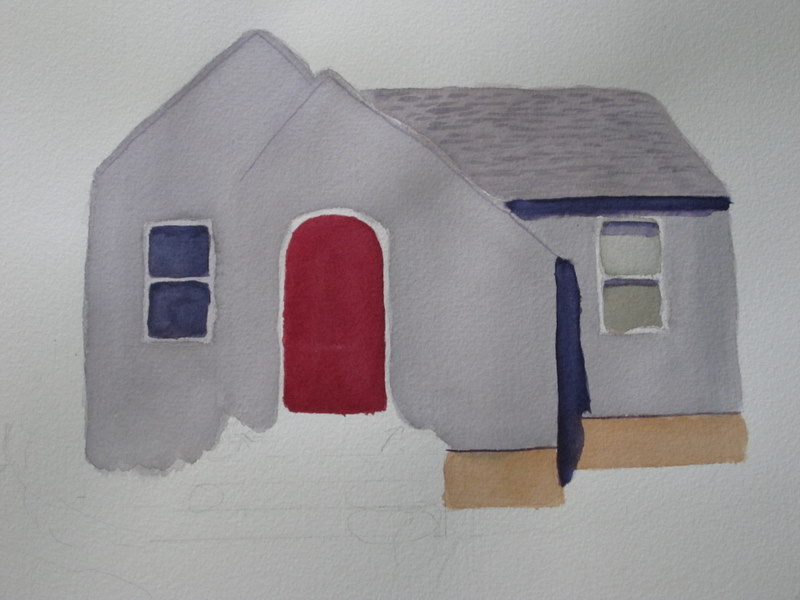
Actually, I think this was my painting after Week 2. I forgot to take a picture after Week 1. It pretty much looked like this, sans the shadows and the color in the windows.
After week 2, we started adding in the details. This included drawing the shadows to represent the wood siding, using an exacto knife to painstakingly scrape paint and a very thin layer of paper off of the painting to get the areas that should be white to actually be white. FYI – If you want an area of your painting to be white – DON’T PAINT IT!!! It’s much easier than scraping layers off the paper.
I worked on the painting over the weekend (Tim and I set aside “creative time,” where he worked on his short story, and I painted). Well, first I had to do some more art supply shopping. The $2.99 brushes I picked up from Major Art and Hobby majorly sucked. They were losing bristles the first night I used them. Based on recommendations from a friend, I bought some short-handled sable brushes from Micheals. They made a world of difference – the paint went on much more smoothly and more controlled. Here was the painting after the weekend:

The next step was to add the grass, steps, flowers, and background. As you can see from the photograph, the background is very dark. It’s essentially trees. To start me out, Tom had me paint a few patches of blue, and then paint the whole background light green, as a base. It actually looked pretty cool at this stage. Tom said it looked like the cover of a storybook. I wish I would’ve taken pictures, but somehow I forgot. Anyway, during the last night of class, I put on layers and layers of dark, greenish/bluish/purplish paint to try to achieve the dark-looking background of the photo. I kept a few places light, to convey light striking some of the foliage.
The background kept getting darker and darker and wetter and wetter. This was my first foray into watercolor painting, so I was/am still learning how to manage water and the paper and the brushes. I didn’t know before we started that you are supposed to stretch and tape/staple your paper to the drawing board. This is a very important first step. You can’t really tell from the photos I’ve posted, but my paper (140 lb cold press (made out of cotton)) was ultra wavy and crazy. I eventually had to use duct tape to keep it attached to the board. As a consequence, my dark, wet paint kept sliding off the peaks and settling in the valleys. It made for a strange effect.
While I was trying to figure out what to do about the encroaching darkness, I worked on my grass, sidewalk, and flowers. Tom recommended using acrylics to do the flowers, to make them really pop (I’m using that sardonically, but you can’t tell). I got a couple of tubes of Folk Art paint and set to. I’m really happy with how the flowers turned out. Tom gave me lots of tips regarding the colors, shading and shadows, and it really helped. I worked on the painting a little bit last weekend after the final class, and here is the semi-final version:
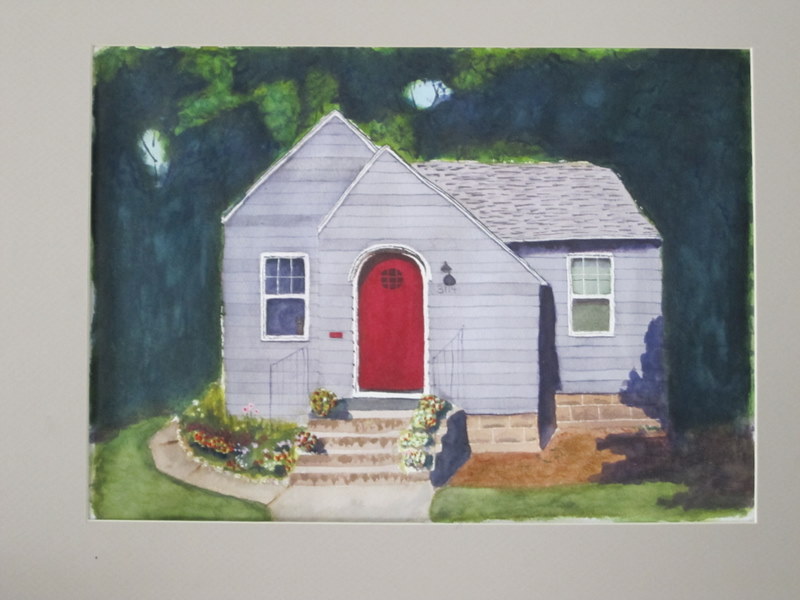
Overall, I am quite happy with how it turned out. I LOVE the greenery, the door, the windows, and the foundation bricks. The grass could use some highlighting/lowlighting – something to make it less uniform. The background needs the same thing in a big way, but I’m at a loss. I need to lighten up sections. I might take Tim’s advice and have a go at it with the exacto knife. I’m afraid of making it worse, though. I have to ponder on it a little more.
But, overall, since this is my first watercolor painting ever, I am very happy with it. I have tons of brushes, paints and paper now and all the reason in the world to keep at this, I just have to make myself do it. I really enjoyed the class, and it’s just super nice to get back into an artistic mind frame again. The class shifted my perspective, and I started seeing all the variation of color and shadow that make up things I looked at cursorarily daily. I started to notice how the tan weeds growing up through the snowbanks were actually a dark lavender at the base, how the clouds in the sky actually had brown and purple in them, how grass isn’t just green – it’s red and orange and blue, as well as green. The class really made me see things differently. Even if I never paint another watercolor, at least I’ve learned that. Plus, I got to meet some really neat people in the class, one of whom sent me this class picture. That’s Tom, our teacher, in the middle:
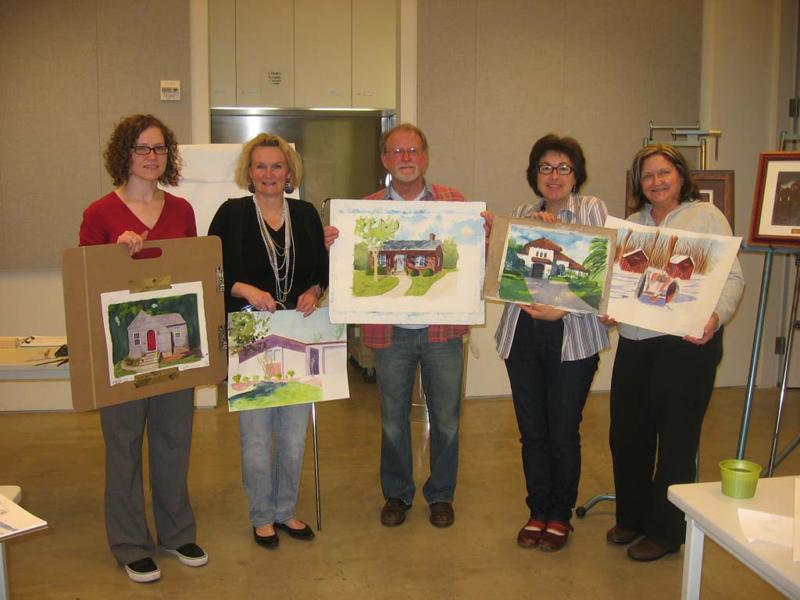
What am I going to do for my next project? I need to paint a picture for Tim – one of Lucent, I think. I need to paint “Serenity” for a friend. I want to paint this photo:
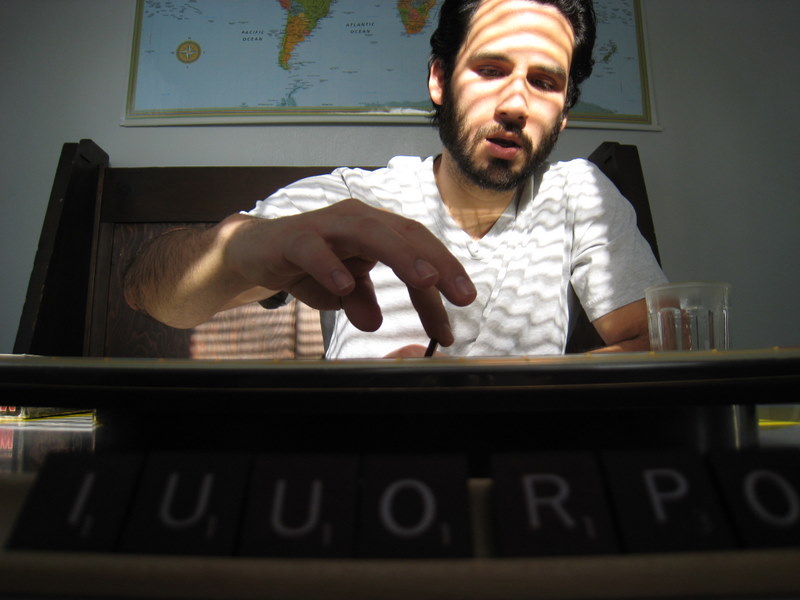
One of my fellow students, who has a BFA and is an art teacher, asked me what I was going to do next, and I described this picture to her. She said, “Wow, you’re ambitious!” Am I biting off more than I can chew? Painting people is probably harder than painting houses. I guess we’ll see. I would also like to do another architectural painting, to reinforce the concepts. Should I re-paint our house, in which case I could actually measure out the house, so it’s to scale? I had a problems with parts of the house not matching up correctly (don’t look at the stair railing too closely). Plus, I could paint a beautiful cloudy sky behind the house instead of Fangorn forest. Or, I could try my hand at a brand new house… So many choices.
Well, if you have any ideas on how to fix the background, let me know. Otherwise thanks for reading, and if you ever get a chance to take Tom’s class, go for it!


